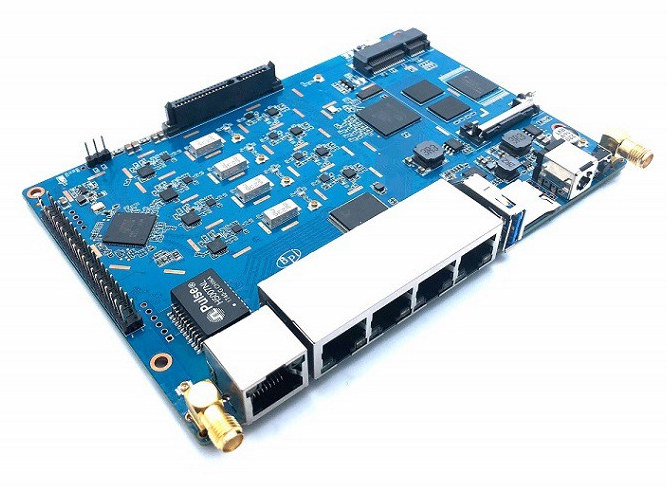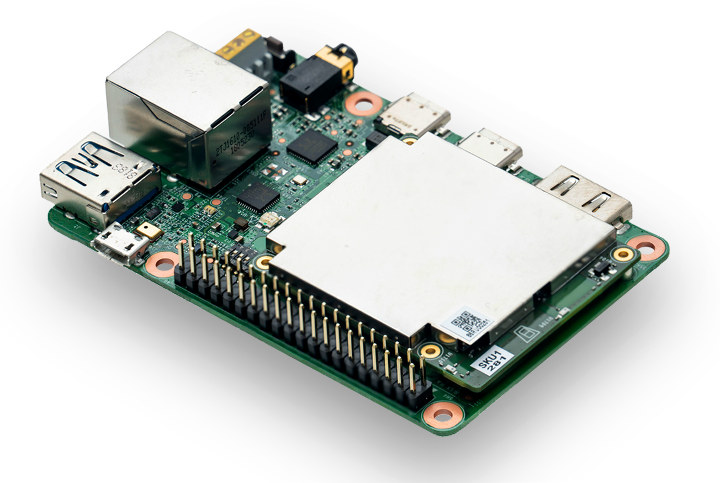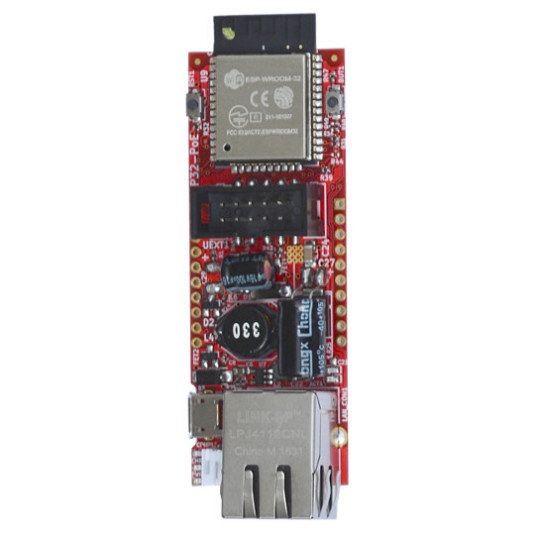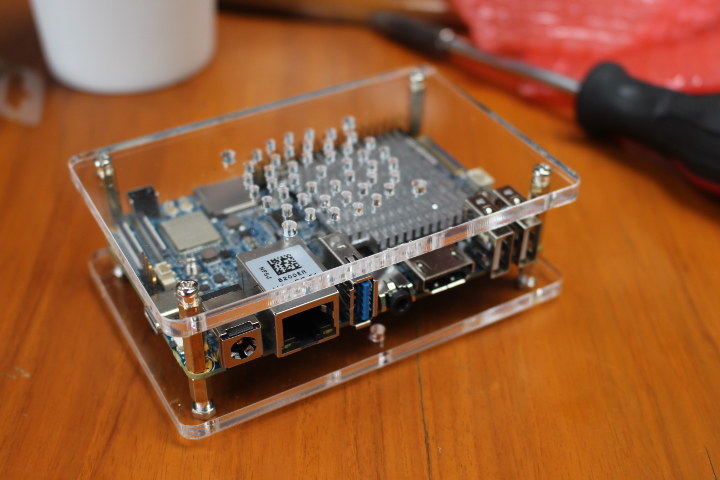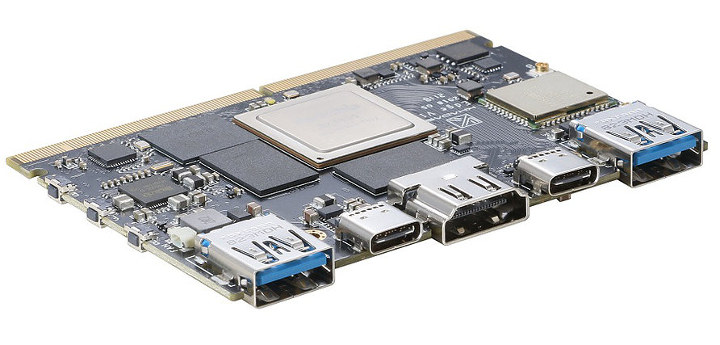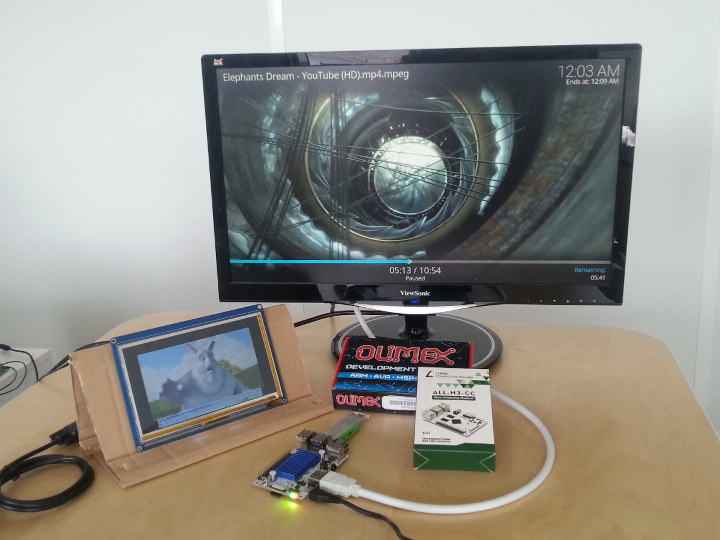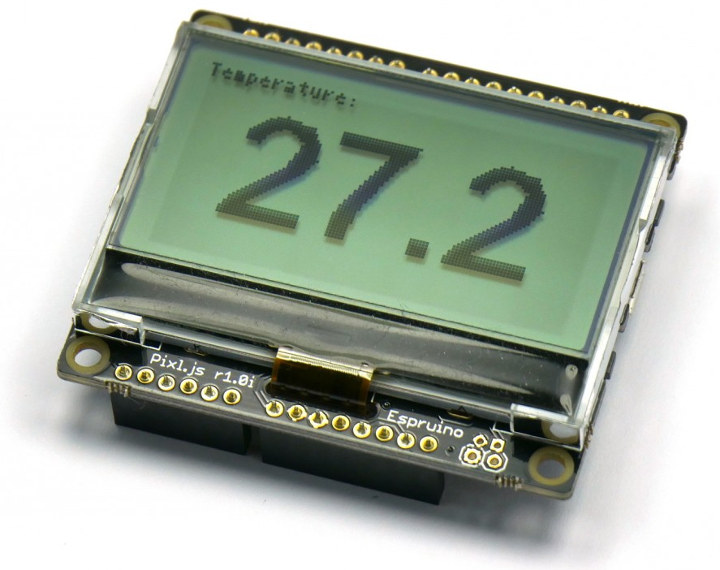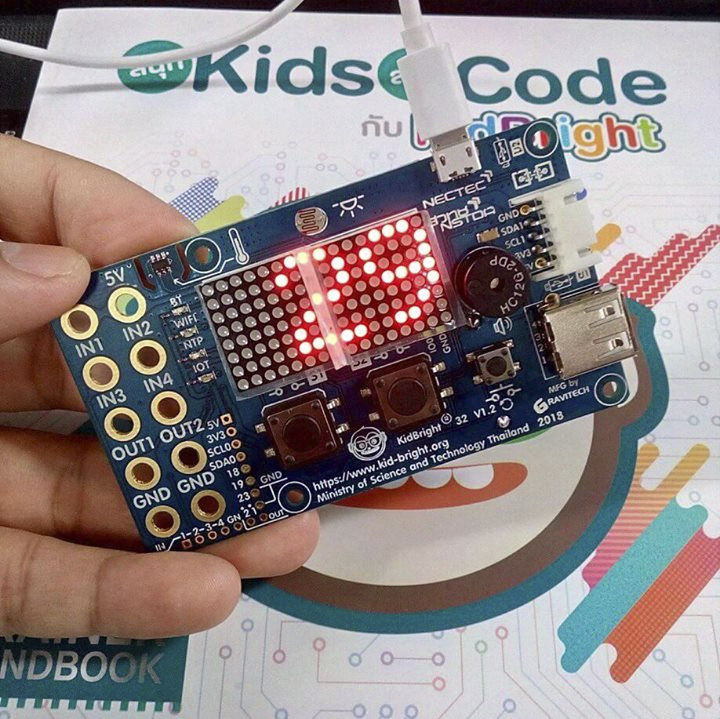SinoVoIP launched several Banana Pi router boards in the past starting with Allwinner A20 based Banana Pi BPI-R1 in 2014, and followed by Banana Pi BPI-R2 board powered by a Mediatek MT7623 processor last year. Such boards normally include multiple Gigabit Ethernet ports, as well as at least one SATA connector, and in some cases an mPCIe connector for WiFi or LTE cards. THe company also launched Banana Pi BPI-W2 board a few months ago, but that model is more geared towards multimedia router use cases. The company has now unveiled Banana Pi BPI-R64 router board based on Mediatek MT7622 dual core Arm Cortex-A53 processor, five Gigabit Ethernet port, on-board 802.11ac WiFi, one “laptop” SATA port, as well as an optional PoE (Power-over-Ethernet) add-on board.Banana PI RPI-R64 board specifications provided by the company – which has not always shown to be accurate -: SoC – MediaTek MT7622 dual-core Arm Cortex-A53 […]
Google Unveils Edge TPU Low Power Machine Learning Chip, AIY Edge TPU Development Board and Accelerator
Google introduced artificial intelligence and machine learning concepts to hundreds of thousands of people with their AIY projects kit such as the AIY Voice Kit with voice recognition and the AIY Vision Kit for computer vision applications. The company has now gone further by unveiling Edge TPU, its own purpose-built ASIC chip designed to run TensorFlow Lite ML models at the edge, as well as corresponding AIY Edge TPU development board, and AIY Edge TPU accelerator USB stick to add to any USB compatible hardware. Google Edge TPU (Tensor Processing Unit) & Cloud IoT Edge Software Edge TPU is a tiny chip for machine learning (ML) optimized for performance-per-watt and performance-per-dollar. It can either accelerate ML inferencing on device, or can pair with Google Cloud to create a full cloud-to-edge ML stack. In either case, local processing reduces latency, remove the needs for a persistent network connection, increases privacy, and […]
Olimex Unveils ESP32-POE Board with… PoE Support
One of the differences between ESP8266 and ESP32 is the latter adds an Ethernet MAC, and as a results we have seen a few ESP32 boards with an Ethernet jack offering 10/100M connectivity, including Olimex ESP32-GATEWAY, Olimex ESP32-EVB, or ESP32 Monster Board. ESP32 Ethernet enabled boards are definitely in the minority however, and what’s even more difficult to find is an ESP32 board with Power-over-Ethernet (PoE) support. The good news is that if you’re looking for such type of board, Olimex is working on one based on requirements from their customers. Olimex ESP32-POE board specifications: Wireless module – ESP32-WROOM-32 module with 802.11 b/g/n WiFi and Bluetooth LE External Storage – micro SD card socket Connectivity – 10/100M Ethernet with PoE power management based on Si3402 IEEE 802.3at Type 1-compliant chip Expansion UEXT connector for Olimex modules 2x GPIOs stripes spaced at 1″ on 0.1″ step Debugging/Programming – micro USB port […]
FriendlyELEC NanoPC-T4 Board Kit Unboxing and Assembly
FriendlyELEC introduced NanoPC-T4 RK3399 SBC (Single Board Computer) last May for $129. The board comes with a Rockchip RK3399 hexa-core processor, 4GB RAM, 16GB eMMC flash, dual-band WiFi module and an M.2 socket with NVME (PCIe) SSD support. The company has now sent me the device with accessories for review / evaluation. In this post, I’ll check out all items received, and show how to assemble all components. NanoPC-T4 Board Kit Unboxing Let’s getting started, and open the package… I received two identical kits with two NanoPC-T4 boards, acrylic enclosure with spacers, screws and nuts, 12V/2A power supply, heatsink, and an RC-100 IR remote control. In theory, I also expected two WiFi antennas per kit since that’s part fo the kit in their website, but I did not see any. The remote control is an optional item. [Update: Ooops. I found the antennas inside the package for NanoPC-T4 board.] I’ve […]
Khadas Edge is Both a Standalone Board and a System-on-Module powered by Rockchip RK3399
One of the two most common type of Arm boards are single board computers with everything from processor to memory/storage to ports is placed on a single PCB, and system-on-modules with processor, memory and storage, and sometimes some extra chips with for network connectivity, audio and power management that are supposed to be inserted into a baseboard exposing connectors and headers. The upcoming Khadas Edge board is a little different since it combines both categories into one board with USB receptacles and HDMI output as well as 314-pin MXM3 edge connector to connect to Khadas Captain baseboard, or any other custom compatible baseboard. Khadas Edge will come in three variants (Basic/Pro/Max) with the following specifications: SoC – Rockchip RK3399 hexa core processor with 2x Arm Cortex-A72 up to 1.8GHz, 4x Cortex-A53 up to 1.5GHz, Arm Mali T864 GPU with support for OpenGL ES1.1/2.0/3.0/3.1, OpenVG1.1, OpenCL, DX11, VPU with4K VP9 and 4K […]
Bootlin Releases Open Source VPU Driver for Allwinner Processors with MPEG2 and H.264 Video Decoding
At the beginning of the year, Bootlin – formerly Free Electrons – launched a crowdfunding campaign to bring open source Allwinner VPU driver to mainline Linux. VPU (Video Processing Unit) drivers are used to encode and decode videos. They were successfully in raising enough money from small donors, as well as several companies manufacturing Allwinner development boards including Olimex, Pine64, Libre Computer, FriendlyELEC, and Xunlong Software (Orange Pi). The amount raised (€31,612) was enough to assign two engineers to work on the main goals, as well as some stretch goals namely support for newer Allwinner H3, H5, and A64 processors, and H.265 video decoding. The good news is the company has now delivery the first release for their work on the main goals. The photo above illustrated a demo of Kodi running with bootlin open source Cedrus VPU driver on top of Linux 4.18-rc kernel. Both MPEG2 and H264 are […]
Espruino Pixl.js is a Bluetooth LE Display Programmable with JavaScript, Compatible with Arduino Shields
Espruino is an open source firmware that allows you to control micro-controllers board with JavaScript, and used in hardware such as Wio LTE GPS tracker, some STM32 Cellular IoT Discovery Kits, and other platforms. I have actually tried Espruino and JavaScript programming in an ESP32 board myself, and it worked reasonably well. But Espruino developers also provide hardware platforms for Espruino, which – as one should expect – are normally better supported than other third-party board. One of their latest platforms is Espruino Pixl.js a Bluetooth smart display powered by Nordic Semi nRF52832 WiSoC. Espruino Pixl.js specifications: WiSoC – Nordic Semi nRF52832 Arm Cortex-M4 @ 64MHz with 64kB RAM, 512kB Flash, Bluetooth Low Energy connectivity (via a Raytac Corportation module) Display – 54mm diagonal, 128 x 64 sunlight readable monochrome display with white backlight Connectivity – Bluetooth LE and NFC tag I/Os 20x GPIO in Arduino footprint with PWM, SPI, […]
KidBright32 Board is Thailand’s BBC Micro:Bit Equivalent
BBC Micro:Bit board was first announced in July 2015. Designed for STEM education, the board was then offered to UK schools in March 2016, and a few months later UK store would start selling it worldwide. It’s now available pretty much anywhere, and you can likely find it in a local store or online. The Thai government must have seen this, and thought to themselves “If the British can do it, we can do it too!”, as the National Electronics and Computer Technology Center (NECTEC) part of Thailand’s Ministry of Science and Technology designed KidBright32 board and courses to teach STEM to Thai students. The board is based on Espressif Systems ESP32-WROOM-32 WiFI and Bluetooth module, and comes with large holes for power (5V/GND) and 6 digital inputs/outputs, smaller through holes for I2C and more I/Os, as well as an I2C header. We’ll also find some LEDs, two dot matrix […]


